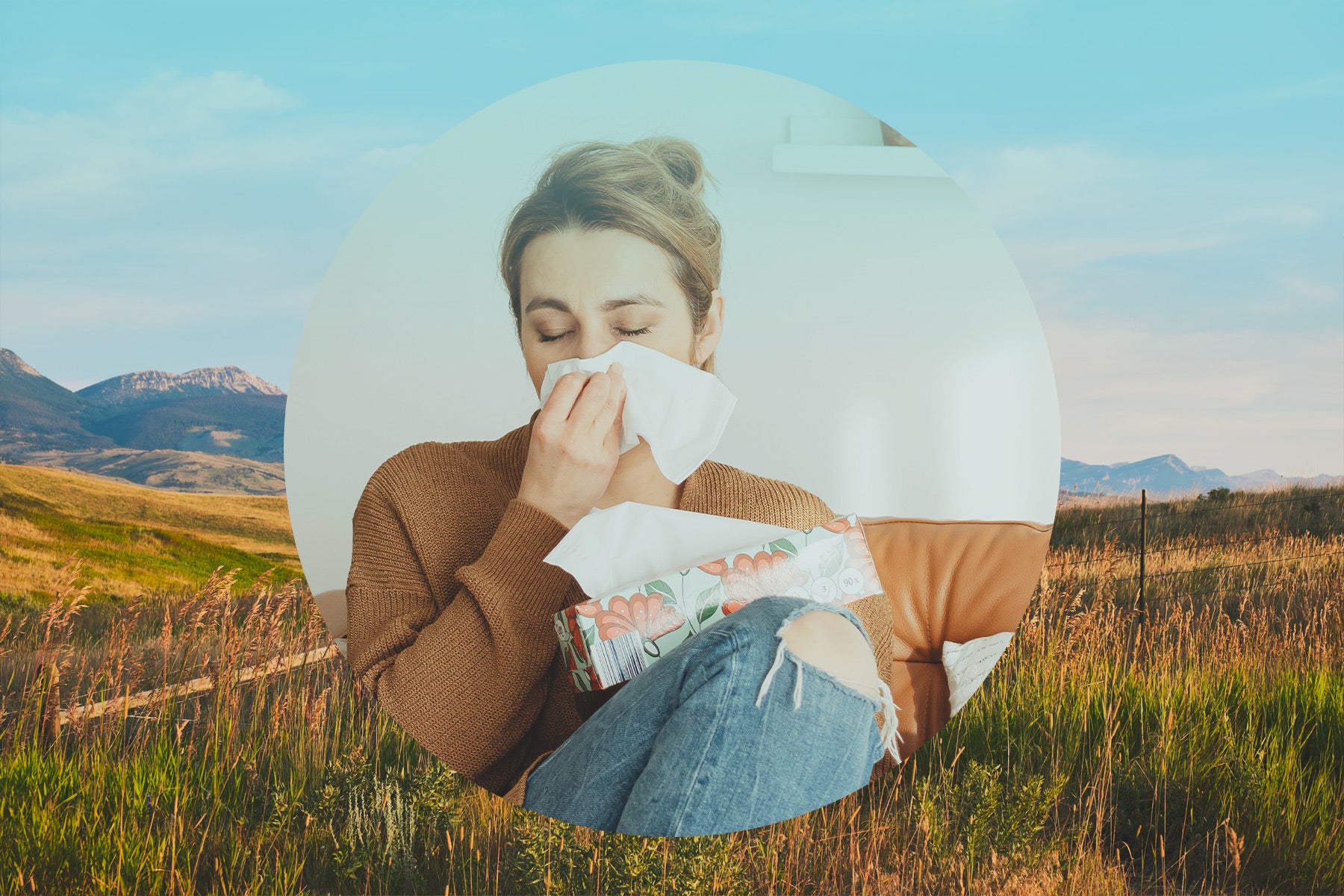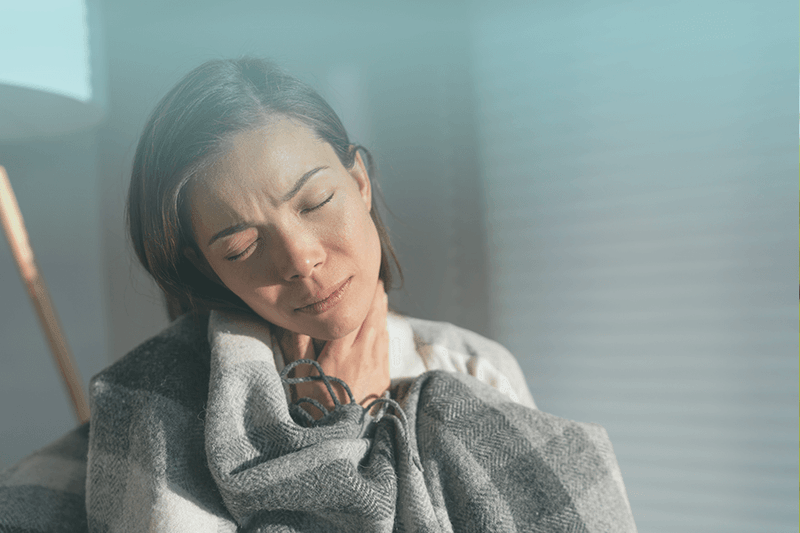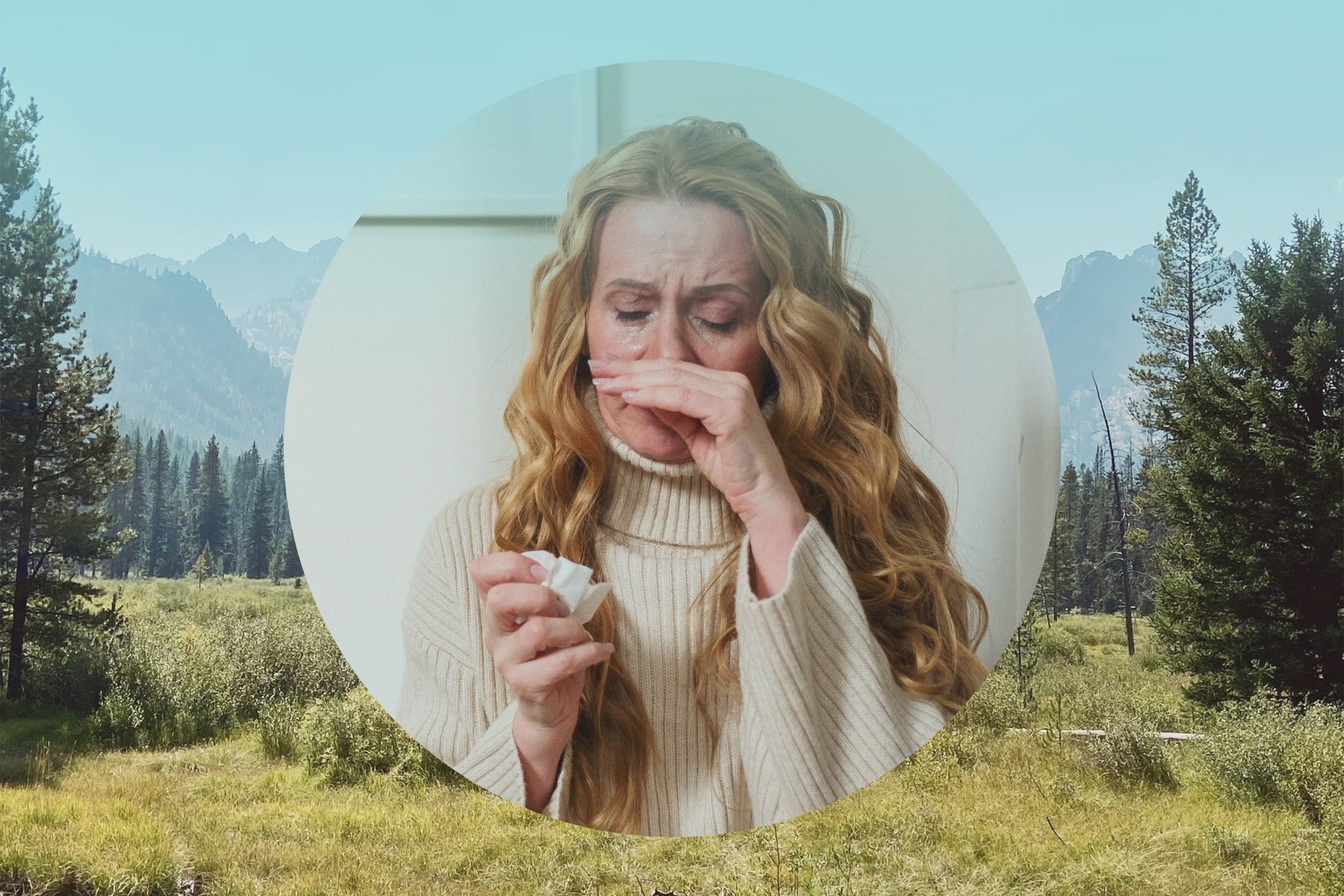Breathe Freely

How to Best Manage Montana Allergy Season
The state of Montana is filled with crisp skies, picturesque wildlife, and historic mineral mines embedded deep in its rugged mountains. Want to treasure all the “Treasure State” can offer? Get a grip on your allergies and start breathing easier and feeling better today.
The state of Montana is filled with crisp skies, picturesque wildlife, and historic mineral mines embedded deep in its rugged mountains. Want to treasure all the “Treasure State” can offer? Get a grip on your allergies and start breathing easier and feeling better today.
If the sight of cotton clouds, surreal blue skies, and snow-capped mountains doesn't feel like a waking dream, then what does? Renowned for the iconic Rocky Mountains, impeccable hunting, and the sprawling landscapes of Bighorn Canyon, Montana truly is a gleaming example of “big-sky country.” From winter to fall, every month of the year, there’s something to see and do.
So why let Montana’s allergy season get you down? Whether you suffer from seasonal allergies or perennial, year-round allergies, you should always strive for effective treatment. Depending on your sensitivities and lifestyle, you could start reducing your symptoms before you know it.
Are you ready to unlock all Montana living has to offer, unencumbered by severe allergies and symptoms? Let’s explore how you can potentially do just that.
Here’s everything you should know about Montana allergy season…

What To Expect During Montana Allergy Season
Montana’s allergy season will fluctuate as intensely as your own personal vulnerabilities. Remember, every person is different and every immune system is unique. Typically, ‘seasonal allergies’ refer to spring tree pollen, summer grass pollen, and fall weed pollen. Although the exact month and seasons vary, seasonal allergy sufferers can expect to see symptoms wax and wane with particular pollen sensitivities.
It Largely Depends On Your Personal Susceptibility!
Again, no one size fits all! You may hear that pollen counts are “high” in June, but because you are not sensitive to grass pollen, you may lack symptoms. By contrast, you may go outside on a “low” day but find yourself sneezing and coughing because your particular immune system overreacts to tree pollen. Your immune system, location, exposure level, and climate factors all interrelate to trigger allergies.
That said, you should also be on the lookout for perennial allergies, which are those symptoms caused by year-round triggers. These allergens typically include non-pollen sources, like dust mites, pet dander, cockroaches, and mold spores. While we think of these allergens as intensifying during winter (because we’re more frequently indoors), they can actually cause symptoms throughout the calendar year.
How Long Does Montana Allergy Season Last?
Montana’s allergy seasons vary by spring, summer, fall, and winter. The brunt of so-called allergy season ranges from the beginning of May and usually tapers off toward the end of June. Of course, there are always exceptions. Sometimes allergy season extends through October. Given growing trends toward greater, lengthier allergy seasons, this may come as no surprise.
Now, a more nuanced answer. It all depends! Again, a troublesome Montana allergy season for one person may be a nothing burger for someone else. You also have to consider the innumerable plant species, household allergens, and the interplay between the two. For instance, some unlucky residents may escape the pollen outdoors, sneezing and coughing, only to encounter allergenic mold or dust indoors!
Montana’s Tree Allergy Season Is Different
For the most part, Montana’s grass and weed allergy seasons follow predictable patterns. Grass pollination usually starts by mid-May and is over by the start of July. Meanwhile, weed season begins in May and peters out around October. Tree pollen season, however, seemingly has a mind of its own.
Tree allergy season appears to be largely subject to interspecies variations. For example, Ash trees most notably start pollinating at the beginning of spring, with Birch tree specimens beginning their cycles toward the end of spring into summer. When it comes to Maple trees, pollen isn’t released until the middle of autumn! The typical Oak tree is similar, often waiting till October to reach its pollen peak.
So, if you’re allergic to tree pollen, you may want to be extremely vigilant, as different periods could trigger different symptoms. Montana allergy seasons are constantly, subtly shifting, as are any state’s, so it’s crucial that you take preventative measures. As always, consult your healthcare provider, and don’t forget to plan for Montana’s perennial allergens as well!
What’s Worse in Montana: Seasonal or Perennial Allergies?
Truth be told, this may be a question without an answer. The subtle and significant differences between and within these allergic reactions can be vast. In other words, it all varies. Consider perennial allergies, for instance. While the term implies that these allergies may exist all year long, that doesn’t mean you’ll necessarily have symptoms that long. Some people may have issues intermittently, while other people experience chronic symptoms that persist for months at a time.
Meanwhile, seasonal allergies may only last days or weeks, but the severity could be worse. Again, and it can’t be said enough, it all depends on countless variables.
Understanding “Hay Fever” Allergies in Montana
A good example is rhinitis, which is the inflammation of your nasal passages. According to the Asthma and Allergy Foundation of America, there are two common types of rhinitis, collectively affecting upwards of 80 million Americans. Although the collection of symptoms is typically called “hay fever,” not all rhinitis symptoms can be attributed to this condition.
The differences in these two forms of rhinitis highlight some of the differences between seasonal and perennial allergies:
As you can see, rhinitis can occur for a variety of reasons. Conceivably, an allergy sufferer may struggle with seasonal allergic rhinitis while also dealing with perennial allergic rhinitis due to dander, dust, and other allergens. It should be noted that both forms of rhinitis are caused by environmental allergens. That is, allergens in one’s physical surroundings, contrasted with food-based allergens which must be ingested to trigger symptoms.
Main Symptoms To Look Out For During Montana Allergy Season
You’ve heard of the common allergy symptoms, and perhaps you’ve experienced many of them yourself. From a gnarly headache to a clogged nose, mucus-filled throat, scratchy, reddened eyes, and so much more, you’re probably familiar.
But how do you know for sure your symptoms are from allergies? Although an at-home allergy test is one way to know, you should also be aware of the general differences. After all, who is to say you’re feeling yucky due to a cold or flu virus, and not seasonal allergies?
Is It Cold, Covid, Virus, or Allergies?
If you’re feeling less-than-your-best during Montana allergy season, note your issues. Typical seasonal allergies crop up around the same time each year and persist until the particular triggering allergen is no longer circulating. Depending on the allergen, this period may range from two to three weeks. While colds last roughly a week, they usually cause far less itching in your eyes and nose than do seasonal allergies. Perennial allergies are similar to seasonal allergies, but wax and wane the entire year depending on the presence of dust, mold, dander, and cockroach debris.
If you can pinpoint your symptoms, you have a better likelihood of understanding which Montana allergen may be affecting you. Lifestyle, exposure, immune vulnerabilities, and related climate factors can all affect the severity and duration of your Montana allergies. As always, consult a medical professional for proper diagnosis and treatment.
Symptom categories can be broad and varied.
Sinus Inflammation
The hollow spaces in your body, sinuses can become infected or filled with nasty congestion due to allergies. There are typically two kinds of sinusitis, acute sinusitis and chronic sinusitis. Acute sinusitis is a short-lasting swelling of mucous membranes within your throat, nose, and sinuses, increasing pressure and contributing to headaches. Chronic sinusitis is more severe, and either occurs multiple times during the year or occurs for extended periods at a time, usually over 12 weeks. Symptoms may include ear pressure, fatigue, thick colored mucus, stuffy nose, swelling of the face, and loss of smell and taste.
Skin Reactions
Ever feel super dried out during the winter? How about itchy and irritated during the spring and fall? Whether it’s Montana’s seasonal pollen allergies or sensitivity to dander and dust, your allergic reactions can do a number on your skin. Worse than that, some allergies can actually lead to more chronic conditions, such as eczema. Swelling, irritation, and redness are all common characteristics of this condition. You may also experience hives, bumps, and flaked and cracked skin.
Rhinitis
Although infectious and non-allergic rhinitis are fairly common, most Montana allergy sufferers are familiar with the allergic types. As previously mentioned, rhinitis is the inflammation of the nose. When exposed to seasonal or perennial allergens, the body may start to overproduce mucus. As a result, this thick, discolored mucus can start to drain heavily down the back of your throat, causing irritation, coughing, and sneezing. Although often short-lived, rhinitis can become more chronic for some severe allergy sufferers, lasting for months on end.
Eye Allergies
We all want to see clearly, but sometimes, Montana allergens have other plans! Generally speaking, eye allergies can be tricky. People commonly confuse ‘pink eye’ and reactions to irritants with actual allergic reactions. Just to be clear, problems from chemicals, smoke, and dirt are not allergies. Moreover, viral and bacterial infections, such as pink eye, typically spread from one eye to another in 1 to 2 days.
If you’re unsure whether you have eye allergies, an infection, or simply discomfort from irritants, consult a healthcare provider. Generally speaking, eye allergies cause redness, swollen eyelids, watering, burning, and itching.
Severe Allergies
Do not play games with serious allergic reactions. Contact 911 right away. If you have an EpiPen, use it immediately. Also called “anaphylaxis,” severe allergic reactions can occur suddenly and lead to death. If you are at risk of sudden onset reactions, you should have a predetermined plan with your allergist or immunologist. Follow that plan accordingly, and always carry your emergency medicine with you. Although anaphylaxis is not commonly associated with pollen, it is caused by a massive range of allergens. These include everything from antibiotics to food items, insects, latex, and even strenuous exercise.
How do you know you’re having a serious allergic reaction?
Anaphylaxis may cause and lead to a spectrum of rapid symptoms. Hives and rashes are the common skin reaction. You may also experience swelling in various areas, such as your throat, tongue, and lips. In terms of respiratory issues, be wary of shortness of breath, wheezing, and difficulty breathing. Some people also experience dizzy spells and fainting. In some cases, pain and bloating in the stomach may occur, leading to violent vomiting and diarrhea. Some women may even experience cramping of the uterus.
Again, if any of these conditions occur, use your EpiPen as medically indicated and call 911. As always, ensure you and your healthcare provider are on the same page and know what to do in the case of emergencies! With a good game plan, a proactive approach, and sound, effective treatments, you can navigate Montana’s seasonal and perennial allergies with confidence.
Main Causes of Montana Allergy Season
As the saying goes, correlation does not imply causation. That said, there are often many “correlations” when it comes to allergens and allergy symptoms. Immunologically speaking, researchers and allergists can study the body’s nuanced chemical reactions to allergen exposure. Environmentally, studies analyze how climate factors, industrial practices, and human habits impact the duration and severity of allergy seasons. Anecdotally, people talk about how they feel, the symptoms they experience, and the treatments they use.
Overall, the causes of allergies are as broad as they are complex. According to the American College of Allergy, Asthma, and Immunology, allergies represent the sixth leading cause of chronic illness nationwide, with over 100 million people in the country experiencing some form of allergy every year.
Common Allergy Culprits: Climates, Conditions, and Congestion
If you’re wondering what’s possibly causing all these increasing issues, you’re not alone. The top experts and specialists worldwide are hard at work, trying to curb the apparent growth of allergens and reduce the prevalence of allergic reactions. While there are many theories and speculations about the driving forces behind these phenomena, three primary reasons emerge: climates, conditions, and congestion.
As the Asthma and Allergy Foundation of America succinctly puts it, temperatures are warming, immune systems are weakening, and cities are growing. While all three points are far from inarguable, the evidence continues to build in their favor. If you’re struggling throughout Montana allergy season - or outside the season, for that matter - consider this global change.
Your Typical Allergies May Be Changing For The Worse…
With climate change, warmer weather is precipitating greater pollen counts and longer pollen seasons. Secondly, conditions are changing as well. Specifically, immune system conditions. Some researchers theorize that our increasingly clean and sterilized environments are actually hindering our immune systems. This “hygiene hypothesis” postulates that because we aren’t strengthening our immune systems from a young age as we once did, we are now immunologically weaker than we once were.
Finally, there is the issue of greater congestion across developed and undeveloped nations. With increased congestion due to increased urban populations, pollution may be intensifying. This, in turn, can worsen allergies across the spectrum.
Overall, these three perceived causes may help explain why Montana’s allergy seasons - and all allergy seasons - appear to be changing for the worse. Of course, contentions remain. The science is not settled, and research continues to uncover new findings and potentialities. As always, consult your healthcare provider for a tailored treatment plan that works for you.
A Potential End to Serious Montana Allergies
Are you ready to try a potentially effective treatment that could help you relieve your symptoms, and even live allergy-free? At Quello, we tailor sublingual allergy drops exactly to your immune system. All you have to do is order a FREE at-home allergy test. Once you’ve provided an easy blood sample, send it to our lab, and we’ll get to work on formulating your unique allergy drop immunotherapy!
**Disclaimer: Allergy drops are not proven to work for everyone. As always, consult your personal healthcare provider for a treatment protocol best suited to your needs.

Overcome your allergies at home with our doctor-led therapy.
Get started with our free allergy test kitGet Started with no test needed.
Overcome your allergies at home with our doctor-led therapy.
Get started with our free allergy test kitGet Started with no test needed.




